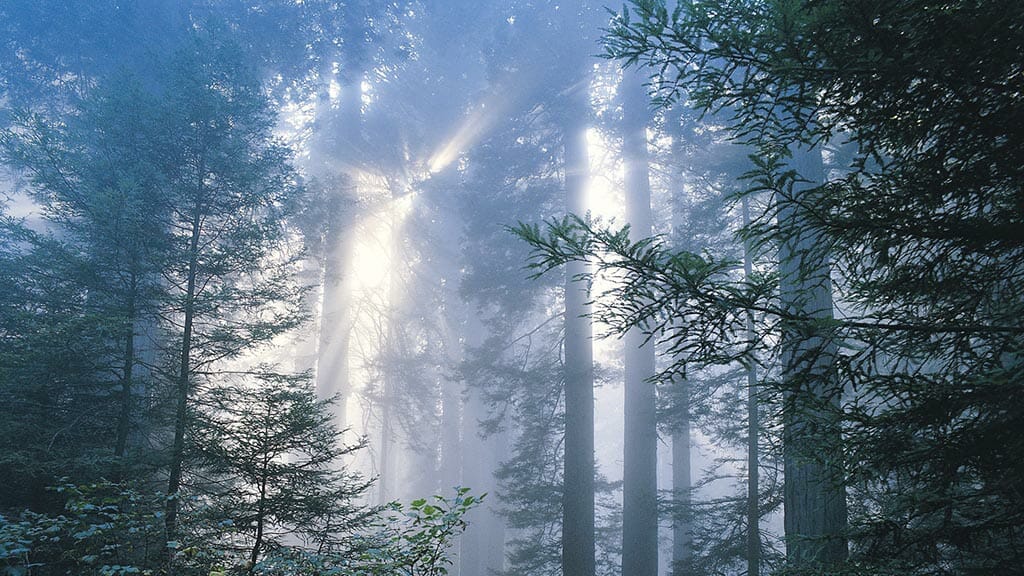A multitude of tree lovers – from scientists to philosophers, foresters to artists, policy experts to designers – are coming to the South West this June. They are coming to mark the centenary of the 1919 Forestry Act that saved England’s woodland 100 years ago and in response to the Climate Change Committee’s call to increase tree planting for zero carbon emissions by 2050.
The Evolving the Forest event (19 – 21 June) on the Dartington estate, Devon – organised by education charity Royal Forestry Society, timber policy advisors Timber Strategies and art curators art.earth – aims to challenge our basic cultural assumptions about the future of the English landscape and ask if the Forestry Act is still fit for purpose in the face of climate change.

Thinkers such as biologist Professor Kathy Willis CBE and Professor Fiona Stafford of the University of Oxford, designers Piers Taylor and Cullinan Studio, and artists Somewhere Nowhere and Marchant Barron are to join the Woodland Trust and the Forestry Commission, which celebrates its centenary this year, to address the issue from all sides.
This many-sided approach expresses the Dartington estate’s 90 year proposal that art and literature must sit alongside the sciences, industry, historic and philosophical thought and policy-making in re-thinking and re-shaping our approach to managing the natural world and the farmed environment, how we build our homes and live on our planet.
In the 20th century Dartington was home to influential forester Wilfred Hiley CBE (1886 – 1961). He pioneered forestry management techniques which were used by the Forestry Commission to tackle severe timber shortages following World War I. Recognising that forestry management requires long term planning, the Dartington estate will launch its Forestry Manifesto for management of its 485 hectares at the conference, planning for climate change at a time when native English species are threatened by warming temperatures.
The Dartington estate is to host Open House 3: Evolving the Forest (22 June) after the conference, which includes a tour its woodland testbed of trials in timber, ecology, agroforestry and other experimental plantings. Many conference sessions are open to the pubic: Professor Fiona Stafford’s opening address Why Trees Matter, which looks at our cultural relationship to woodland; Our Trees and Forests panel with Forestry Commission chair Sir Harry Studholme, Woodland Trust chief executive Beccy Speight and architect Piers Taylor of Invisible Studio (presenter of BBC2’s The World’s Most Extraordinary Homes); and Framing the UK’s Forests with Professor Kathy Willis. Live art performances include Tom Marshman’s We Need to Talk About Bambi and Philip Stanier’s We Like The Trees But Do The Trees Like Us?. BAFTA-winner Paul Wright’s Arcadia (20 June, 8.30pm) is on at the Barn Cinema, ‘an exhilarating study of Britain’s shifting, contradictory relationship to its land’ created from 100 years of footage from the BFI National Archive. There are free visual art exhibitions, many showing for the first time, are set amid the estate woodland and Grade II* listed gardens include Devon sculptor Bob Budd.
Dartington estate manager John Channon says:
‘We’re extremely honoured to be hosting this exciting meeting of minds on the centenary of the establishment of the Forestry Commission. One hundred years on and we are facing a very different set of challenges, not least of which is the likely impact of climate change on our native woodlands. Many will remember the devastating effects that Dutch elm disease had on the landscape, and with 17 new diseases recorded over the last 16 years many of our iconic tree species could disappear. To counter the likely impacts, we have to plan ahead which may entail the introduction of new species to this country and a very different look to our wooded landscape.’
Author of Dartington’s Forestry Manifesto, Jez Ralph of Timber Strategies, says:
‘We need to make sure that the trees we plant for ecological resilience are also those we need as a material for renewable building and design. It may be time to abandon the romantic images of bucolic rolling hills created by 19th century artists and propose new paradigms for the management of our landscape based on agro-ecological approaches to timber and food production.’
Arts curator Richard Povall of art.earth says:
‘On the subject of climate change we tend to only hear the science and policy side, but we’re approaching it from a real world direction with many different voices – complexity theory writ large. Artists can make the conversation a different one; they cause us to ask questions rather than accept facts; they can pose questions in an entirely different way to make us pause and think.’
Chief executive of the Royal Forestry Society Simon Lloyd says:
‘This is an opportunity to bring together the very varied interests that so many people who love our forests have and to decide together what we all really want to achieve to meet the challenges that climate change brings.
‘We need more trees – more canopy cover – but we need to make sure we invest in the right trees to survive climate change and balance commercial, environmental and aesthetic expectations. We also need to avoid the mistakes of the past which have left us with large areas of unmanaged broadleaved woodland which are far more vulnerable to pests and disease than those which are managed. Woodland in the future will need to contain different tree species – including non-natives – but it will be just as beautiful and loved as today, and more valued for all the benefits that it provides.’
